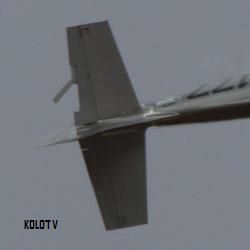Ready, fire, aim…
There’s plenty of online hysteria — hello, Daily Beast — about the crash of the P-51 at the Reno Air Races on Friday, and it’s a good time to cite Bob’s Axiom — the amount of loaded adjectives and supposition in a story is in inverse proportion to the amount of facts and good journalism therein.
And remember: these military pilots are young, flying at the peak of their fitness, wearing special suits to withstand what are called G-forces–the pressure on the body created by high speed maneuvers–and very few aspirants ever make the grade. Imagine, then, how reckless it is to have old men, who can succumb to sudden health problems, flying hot rods barely 100 feet above thousands of people. It beggars belief.
 I have no idea what happened, but it was pretty clear to me by watching the video that it involved the area of the elevator — the control surfaces on the back of the tail that control aircraft pitch. Am I right? I don’t know.
I have no idea what happened, but it was pretty clear to me by watching the video that it involved the area of the elevator — the control surfaces on the back of the tail that control aircraft pitch. Am I right? I don’t know.
Since then, there’s been a focus on the “trim tab,” a small piece along the elevator that a pilot can adjust to set a plane’s pitch without needing to exert control input via the yoke so intensely.
Did it have something to do with the plane being old? Not likely. Did it have something to do with the pilot being old? Again, not likely. There are few young pilots who believe they are better pilots than the man who was first on the scene of the crash. Older pilots like that don’t fly the airplane, they are the airplane.
It’s also worth noting that the two most “miraculous” airline events in U.S. history — the Hudson River USAir ditching and the Sioux City DC-10 crash — were accomplished by two pilots nearing retirement.
Do air races feature hotshot pilots who are on an ego bend and can’t handle the demands of fast flight? Maybe. But Mark Kelly was going to fly in the races and he recently finished flying an aircraft that goes a lot faster — the space shuttle. Retired astronaut Hoot Gibson, possibly the most publicly recognized air racer, is a Reno regular.
Brian Dunning, writing at Skeptoid, also doesn’t know for sure what happened.
The media has described Leeward’s plane as a “vintage” plane. This is hardly true. While WWII-era P-51 Mustangs, like Galloping Ghost, have long been mainstays of the Unlimited class in which he was competing, there is hardly a component of the original planes remaining. These planes are as fast and as modern as anyone knows how to make them. They are the fastest piston-driven airplanes in the world, and no expense is spared to gain a fraction of a knot in airspeed. Each is unique and is built to the extreme.
The “extreme” is a dangerous place in the world of physics and aerodynamics.
“When airplanes approach the speed of sound (Leeward and Hannah had both been traveling about Mach .67), airflow over certain parts of the airframe will exceed the speed of sound and create shockwaves. These can be like hitting the airplane with a hammer. They cause buffeting and damage,” he writes.
The deaths of the spectators — the first time that’s happened in 47 years — is certainly shocking and tragic. There’s a debate to be had over the future of air racing in the desert. But if this event is to be used as the springboard for that debate, we’re going to have to depend on the sciences to determine what happened first.
(h/t: Eric Hall)
